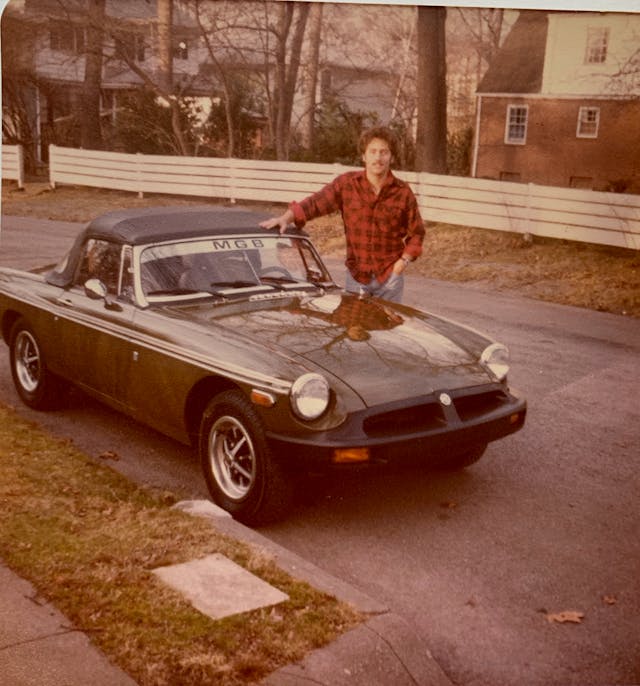Welcome to Original Owner, a series from our US site showcasing—you guessed it—people who bought a classic car new and still own it. The cars don’t need to be factory-original, just still in the hands of the first owner and still getting driven. —Ed.
At 16 years old, Peter Cosmides bought a 1975 MGB roadster brand-new with funds he’d earned working since he was 12. The purchase had fulfilled an obsession sparked when he was a very young boy. After buying the iconic roadster, Cosmides would find it steering his life’s course in unexpected ways.

“Owning the MG shaped my life as far as my hobby, my friends, and even my vocation,” Cosmides recalls. “The friends I have today are all people that have MGs or other British cars that I’ve met over the years. In 2020, I retired from running a British car restoration business for 14 years.”
Before all that happened, the MG was just his fun daily driver. He wasn’t afraid to take it on long road trips, either: A year after buying it, Cosmides drove the green roadster cross-country from his home at the time in Valley Stream, New York, on Long Island, to attend Arizona State University.

“My girlfriend, Anne, lived with me there for a time,” he says. “She was my high school sweetheart. We got married in 1980 and are still married. She knew I was already well ensconced in the MG world when she came along.”
The MG would serve as the newlyweds’ only car for several years. It even took them to the laundromat.
“By around 1980, we bought something else, and the MG became the second car,” he says. “I started taking it to British car shows, and I’ve been going ever since. I made several trips to Florida in it over the years, too.”
MG family
The MGB, which now has about 100,000 miles, has acquired MG siblings over the years. When we spoke with Cosmides in July 2023, he and his wife had just returned to his southern New Jersey home from a 1350-mile road trip in one of them, a 1996 MGF, the mid-engine roadster never imported to the United States.


Cosmides also owns one of the 2600-or-so MGB GT V8 models built from 1973 to 1976, most of which are right-hand-drive for the UK market. To make this captivating model, MG replaced the B’s four-banger with the former Buick 3.5-litre aluminium V8 that British Leyland had come to own and use in a variety of Rover cars, as well as in the Range Rover SUV. Not much heavier than the four-cylinder model, the MGB GT V8 could hit 60mph from zero in 7.5 seconds. This engine would also find its way into the 1978–80 Triumph TR8 as well as the Morgan Plus 8.
MG pilgrimage
The summer 2023 road trip in the MGF had been something of a pilgrimage for Cosmides, a trip which he and his wife took with friends driving an Austin-Healey. The main stop was Petersburg, Virginia, the home of well-known British auto parts supplier Moss Motors, which was hosting a cars and coffee event to celebrate its 75th anniversary.
Cosmides’ connection to Moss went well beyond buying parts for his MGs over the years. In the ’80s, he had worked for the giant parts seller, first in California and then at its warehouse in Rockaway, New Jersey, an operation that later moved to Virginia.
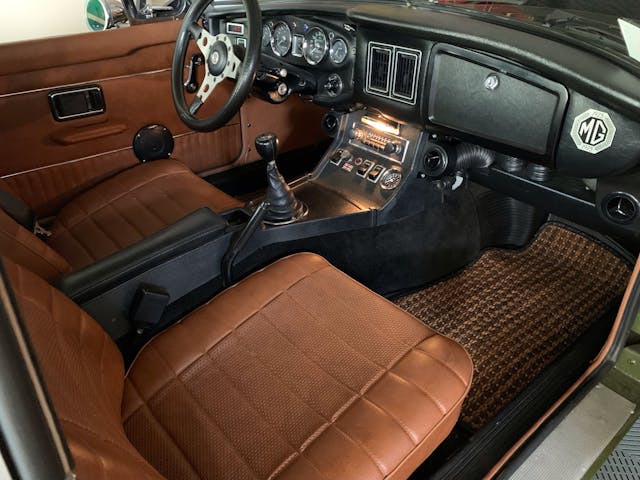
“I was the first employee in their New Jersey facility,” he recalls. “I was there only a couple of years. After that, I worked for Federal Express for about 20 years.”
When the Moss Motors celebration ended, Cosmides and his wife continued southward to North Carolina to pick up a hardtop for the MGF, before returning home to New York.
“The MGF was a much more modern car than the MGB, which had really become an antique toward the end of production,” Cosmides acknowledges. “They’d never really improved on it while struggling to meet any regulations that came along.”
Still, he loves his “antique” as much today as he did on the day he bought it.
A boy’s MG obsession
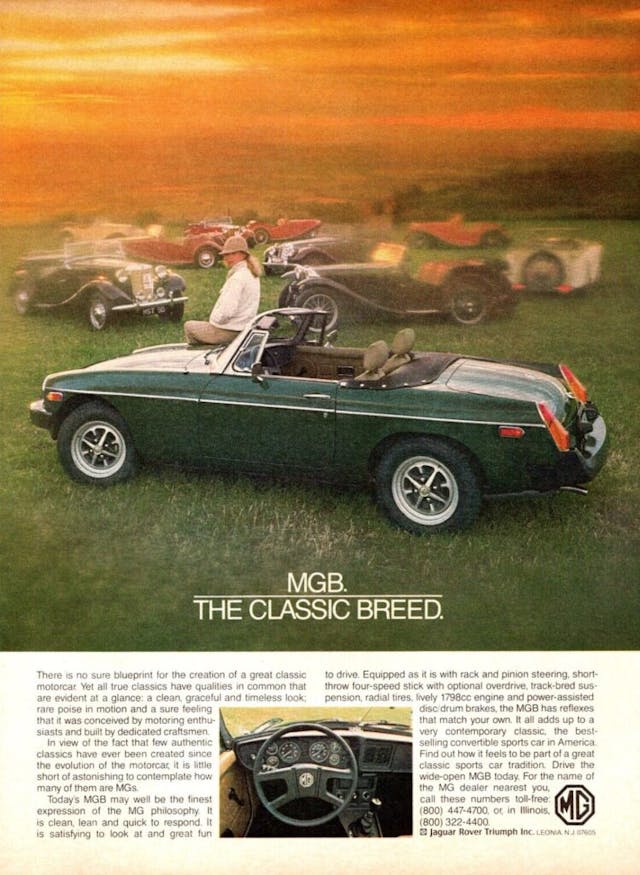
Working for the largest British car parts supplier had been, if only briefly, something of a dream job for a young man whose infatuation with English sports cars had begun when he was a boy.
“When I was five, my uncle bought a 1962 Austin-Healey Sprite Mk II,” he says. “That was the twin to the MG Midget. I used to sit in that car and pretend I was driving. I became kind of a sports car enthusiast right then.”
When he turned 12, Cosmides already had his heart set on buying a new MGB in time for getting his driver’s license in four years’ time. He began working in earnest to achieve that goal. From 1972 through 1975, he was a mechanic at the local Schwinn bicycle store. During summers, he also worked for the local school district as a janitor.
The work paid off. By spring 1975, when he was still 16, Cosmides had saved $3800 (about $21,500 today). “But the MG was $4800,” he remembers. “My father was kind enough to throw in that other thousand dollars. And so, I bought myself a brand-new MGB.”
Accompanied by his father, he ordered the MG from Road-Track Imports on Burnside Avenue in Inwood, New York, in May 1975. Today, the same corner building houses several businesses, including a smoke shop. The old service area is today a tire business.
The car arrived at the dealership in August, in time for Cosmides’ 17th birthday—but it was the wrong colour.
“We had placed an order for a blue one, but a green one came in instead. I took it anyway, and I’m glad I did. It’s a great colour.”

Factory basics: MGB
Years before the British pop music invasion, there was the sports car invasion, with MG as one of the leaders. In 1955, the company replaced the TF, the last of its 1930s-styled “T” models, with the sleek MGA. The new car became an instant hit. Through 1962, MG made about 101,000 of them, with most exported to the US, the largest market for other British sports cars, as well.
The A’s successor would do even better and, like certain British rock bands, it would stick around much longer than seven years. Introduced at the Earls Court Motor Show on September 20, 1962, the MGB ushered in a wave of modernity over the MGA, including a unitized body structure replacing the A’s body-on-frame setup.
The MGB’s handsome in-house design showed more than a passing resemblance to the Pininfarina-designed 1960 Ferrari 250 GT Cabriolet Series II, which certainly added to the cheaper roadster’s appeal. The B boasted a roomier, more comfortable cockpit than the A, including roll-up windows instead of the A’s side curtains.
Under the hood, the B-series OHV inline-four birthed by Austin in 1947 grew from the MGA’s 1.6 litres to 1.8 liters (1798cc, to be precise), with 92 horsepower at 5400rpm and 106lb ft of torque at 3000rpm. These were good numbers for a 2200-pound car. The ’65 gained a stronger, five-main-bearing crankshaft, and MG boosted output slightly to 95bhp and 110lb ft.

The four-speed manual transmission (non-synchro first gear) and suspension carried over from the MGA, using A-arms with coil springs and lever shocks up front and a solid axle on multi-leaf springs with lever shocks in back. An optional front antiroll bar later became standard. Steering was unassisted rack-and-pinion. Wheels measured 14×4.5 inches.
The early MGB could do 0 to 60mph in about 12 seconds and crest 100mph. Laycock de Normanville overdrive was a $175 option that could lower revs in highway driving. A pretty and practical MGB GT hatchback coupe, with a roofline shaped by Pininfarina, joined the roadster in 1965 (1966 in the US) and proved popular.
The MGB got a fully synchronized transmission for 1968, and the air injection pump emission-control system continued to be available, as well. In that year’s road test of an MGB, Road & Track praised its sports car reflexes and pure driving joy but noted an “outdated character.” The MGB roadster’s price was about $2900 that year.
To offer a higher-performance choice, MG created the 1968–69 MGC by dropping in a 3.0-litre Austin inline-six. The 145bhp six chopped the 0-to-60 time down to 10 seconds, but the engine was more than 200 pounds heavier than the four-cylinder. The added weight dampened handling agility and made the MGC’s steering very heavy. Just around 9000 MGC roadsters and GT coupes were made, including for the US. The later MGB GT V8 was a far better package.
Malaise MG
The MGB roadster became a popular club racer in the US, winning numerous SCCA D- and E-Production championships in the mid- and late-1970s with the Huffaker Engineering team sponsored by British Leyland. The ’70s were not kind to the production MGB, though. Stiffening US emissions regulations took a bite out of power for all cars, and the MG’s pushrod four was hit especially hard.
Output for the 1975 MGB was down to 65bhp (SAE net) and 92lb ft of torque at 2500rpm. The engine traded its dual SU carburetors for a single Zenith, and the car gained a catalytic converter. To meet US bumper and lighting regulations, the MGB added ride height and sprouted big, black polyurethane bumpers in mid-1974. The changes pushed weight about 200 pounds higher than the earlier cars. The MG’s 0-to-60 time crept up to about 14 seconds, though a Porsche 914 with the standard 1.8-litre VW air-cooled flat-four did no better.
MGB production ceased in October 1980, when the Abingdon plant that built it closed. By the end, MG had built some 390,000 MGB roadsters and about 125,000 GT coupes. The last roadsters cost $8000 in the US, and a Limited Edition model with special paint and features was $8600. Henry Ford II bought the last one imported to America. The MGB would remain the world’s biggest-selling small sports car until the Mazda MX-5 surpassed it in 2000, as noted by Guinness World Records.

Peter’s MG
Cosmides says his MG held up well, but by 1999 he knew he’d have to address rust in the rocker panels.
“I took it apart and fixed the rust myself and then stripped the car down completely. I then trailered it to a friend in Buffalo, New York, who paints cars. He understands the car and the hobby. I didn’t want to just go to a local body shop to have them paint a classic car.”
One small modification was adding the factory ‘Special Tuning,’ or ST, spoiler. The engine did not need a full rebuild, just the cylinder head and carburettors, plus attention to other components. Cosmides would later replace the MG’s four-speed transmission with a five-speed from the Datsun 280ZX.

“The five-speed is a popular conversion,” he says. “There’s a kit available, and you source the gearbox. It’s a straightforward installation. That was the smartest thing I ever did to the car. The five-speed made a huge difference on the highway. I was able to cruise more comfortably.” [Fifth gear in this transmission is a 0.745:1 overdrive, which significantly reduced the little four-cylinder engine’s revs at highway speeds.]
“A bonus is that the gearbox will come out by itself from underneath the car, which is not something you could do with an MGB four-speed,” Cosmides explains. “If you needed a clutch or any kind of transmission work, you had to pull both the engine and transmission.”
MG memories
Hagerty: When you were saving money for the MG, did you have any thoughts about buying a used model? There were plenty around at that time.
PC: It never occurred to me. I just had my sights set on a new one.
Hagerty: Did any other sports cars catch your eye as a teen?
PC: I had pictures of other cars on my bedroom wall. I knew the Alfa Romeo and Fiat 124 Spiders, of course, and the Fiat X1/9 was on the market by then. Of all things, I liked the Saab Sonnet III, but it was way too quirky. My father would never have gone for that. It was bad enough that I wanted an MG! He’d say, ‘Just buy a Chevy Vega and save a third of the price of an MG.’
Hagerty: When did you install the five-speed?
PC: Not until 2011. I was preparing to take a cross-country trip. A bunch of MG owners were going from the East Coast out to Reno, Nevada, to attend a big MG meet, doing the drive on US Route 50. The trip was 6000 miles round-trip, including going on from Reno to San Francisco.
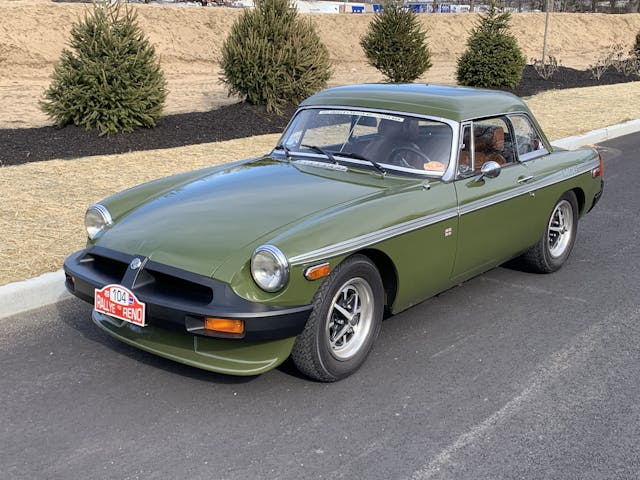
Hagerty: How did the MG do over that distance?
PC: It was trouble-free on that trip. My son, who was in his late 20s at the time, flew out to meet me in Reno. He rode with me until I got to Phoenix and then flew back home. Then I was on my own. Some of the other MG owners in the group had arranged for a car carrier to return their cars to various places along the way back east, but I drove mine. I went down the Pacific Coast Highway to Los Angeles and then across US 40.
Hagerty: What made you decide to open a British car shop?
I’d been working for Federal Express around 20 years, and I had an epiphany that I really didn’t want to do that anymore. I decided to open a repair facility to work on MGs, starting slowly in my garage, working on cars of people I knew. For the next 14 years, I had a shop that specialized in British cars. We did repairs and restorations. A good percentage were MGs.
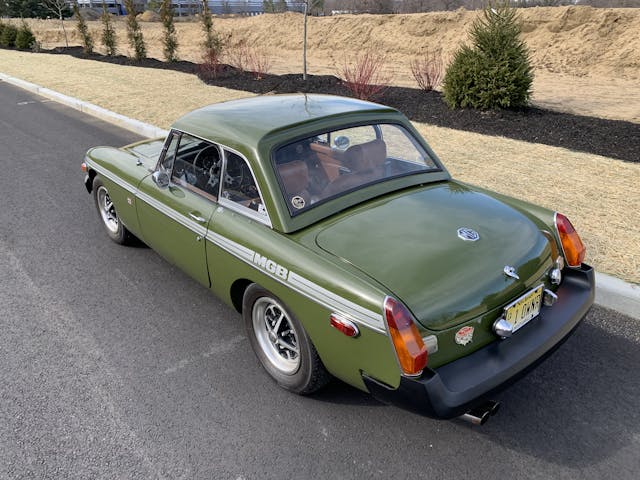
Hagerty: Where did you pick up your skills to work on these cars?
PC: From working on my own. I had no formal training. It was like that bumper sticker you see on old Land Rovers that says something like, ‘Land Rover: turning owners into mechanics for 60 years.’
If you had an MG, you pretty much had to learn how to work on it. You didn’t use it without eventually having to give it some help. I think that’s what attracts a lot of people to British cars, and many classic cars in general. You get a sense that the car needs you, that you’re in a partnership.
For Peter Cosmides, that partnership endures.
